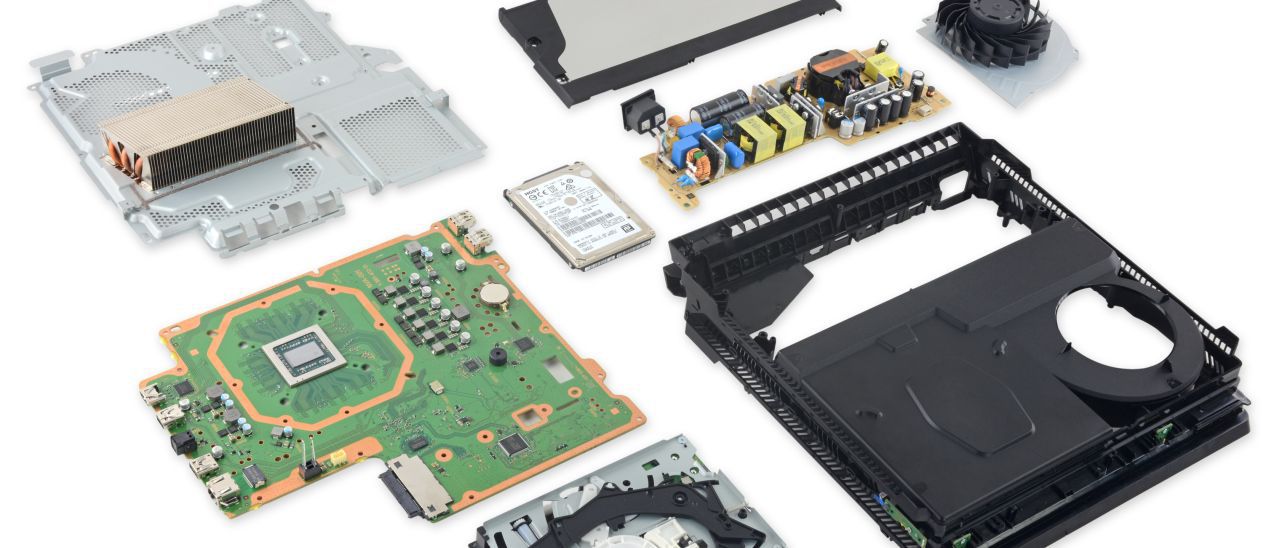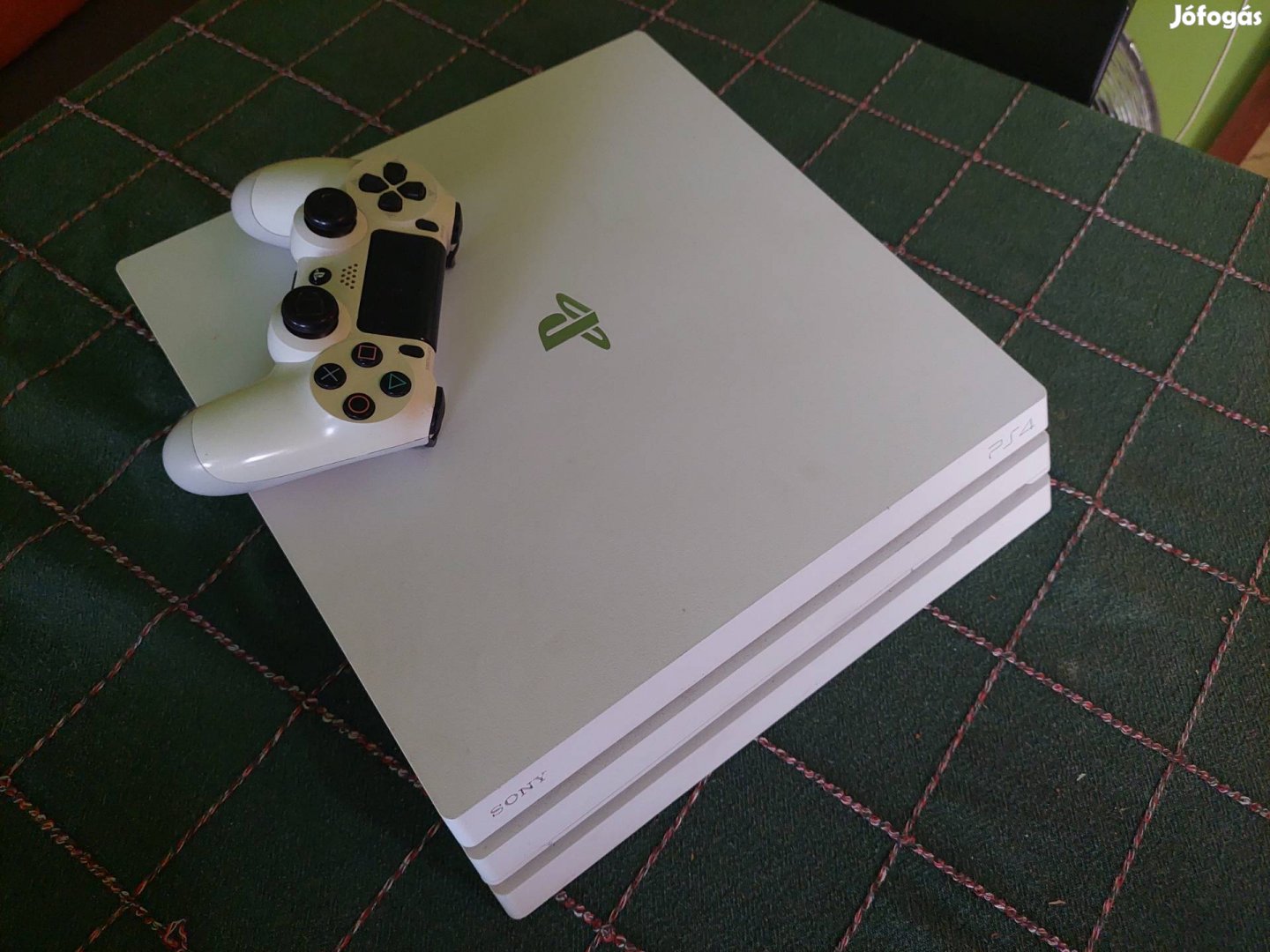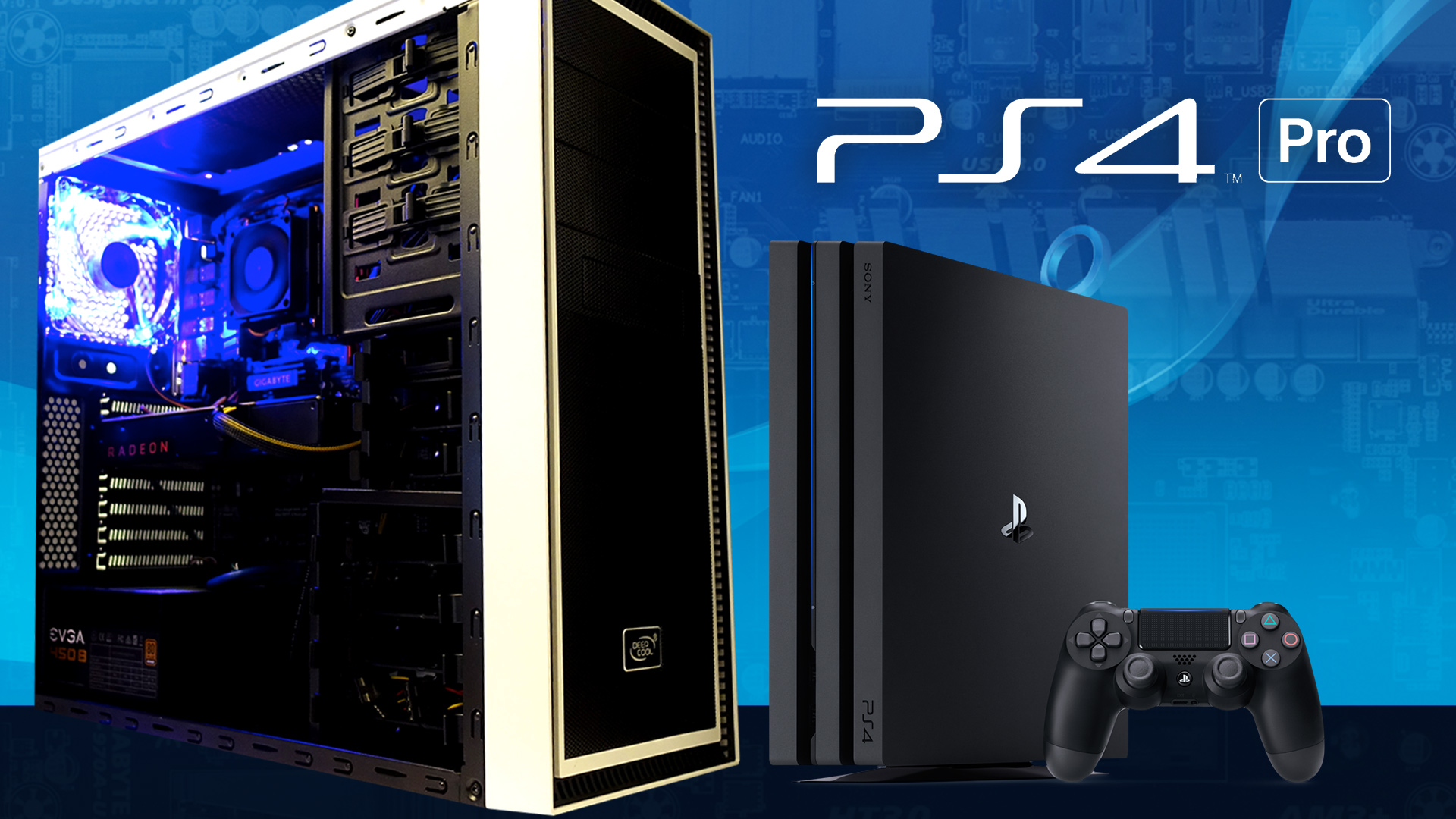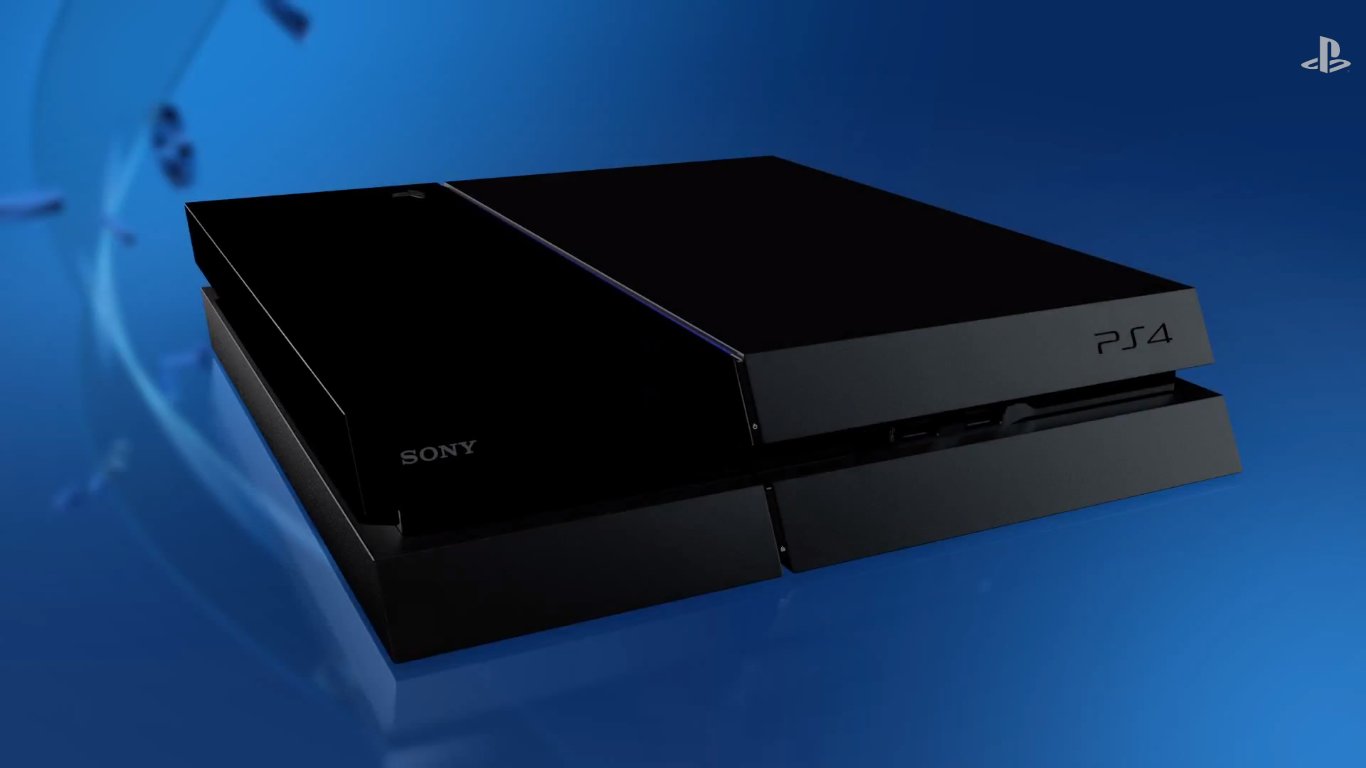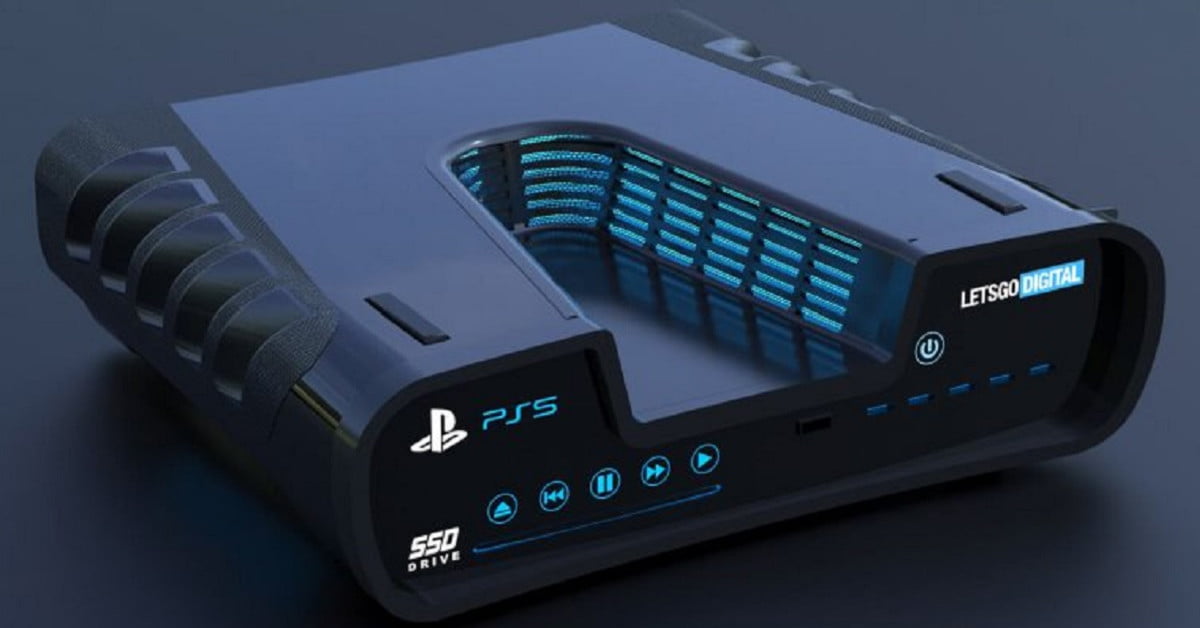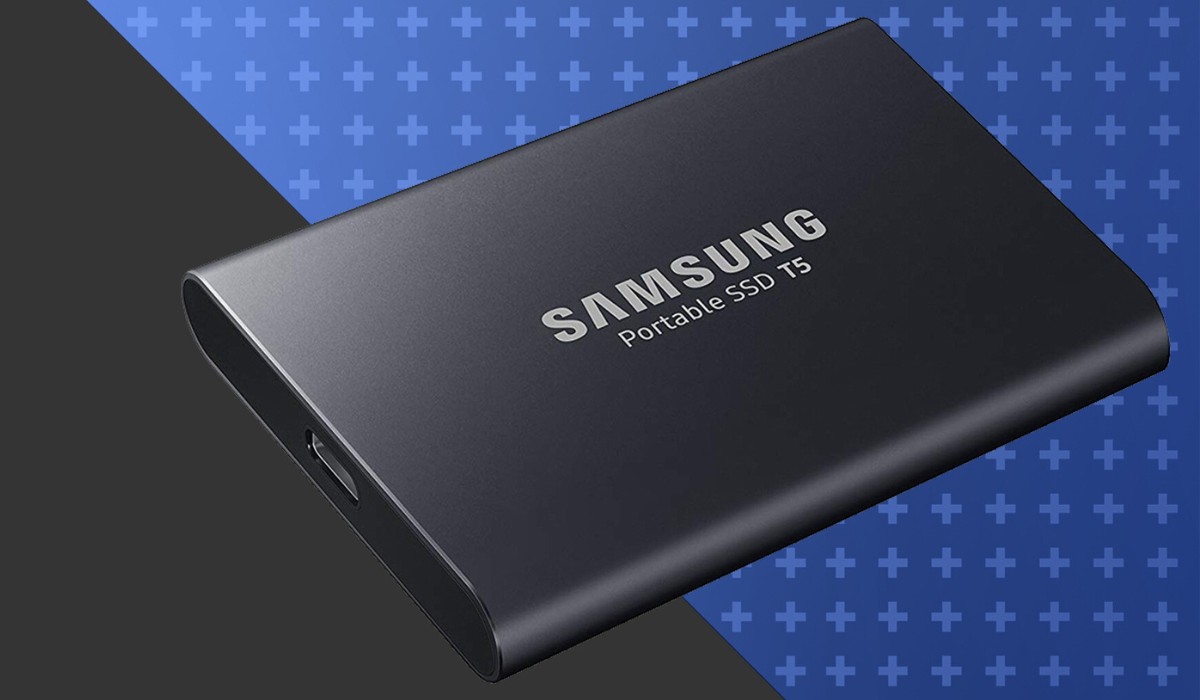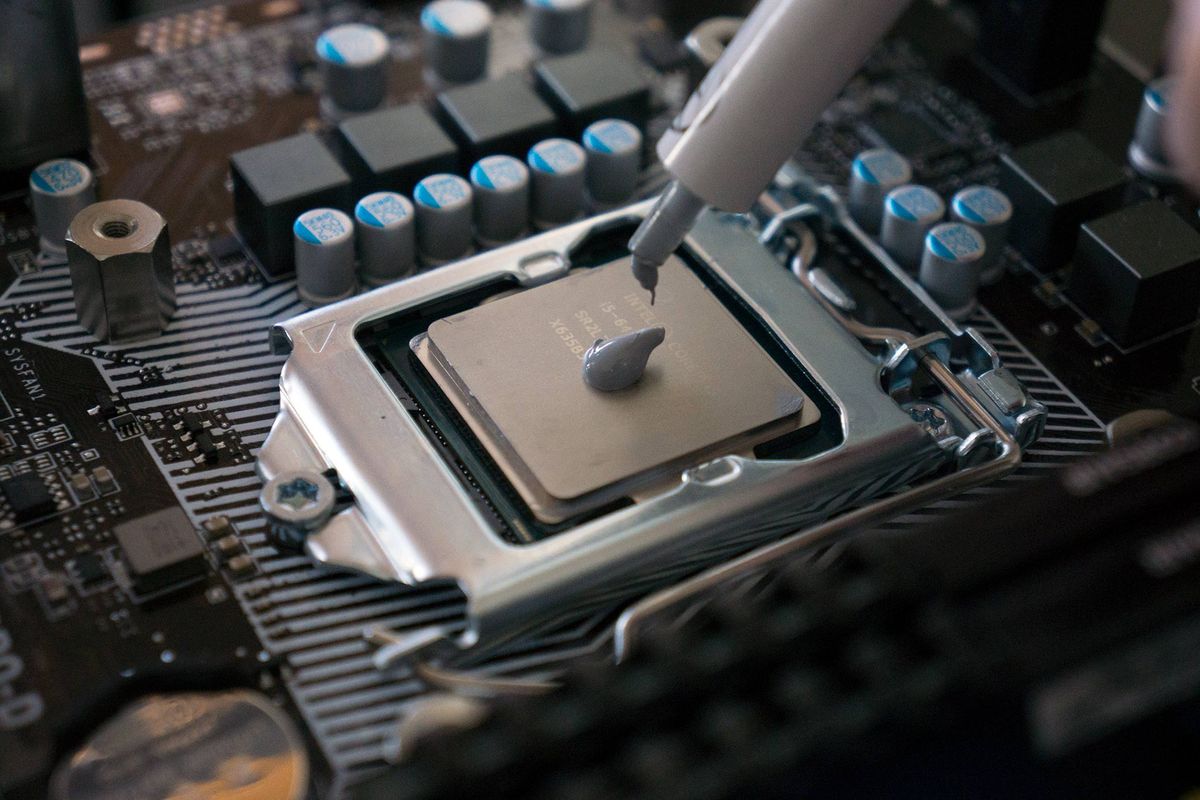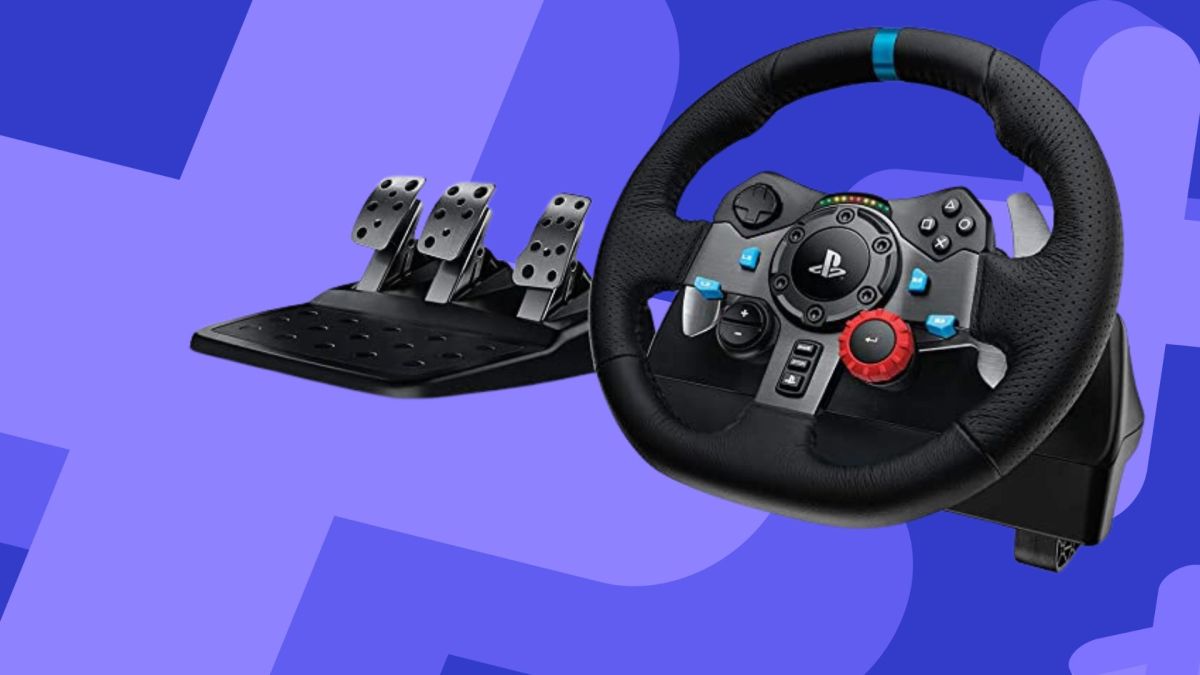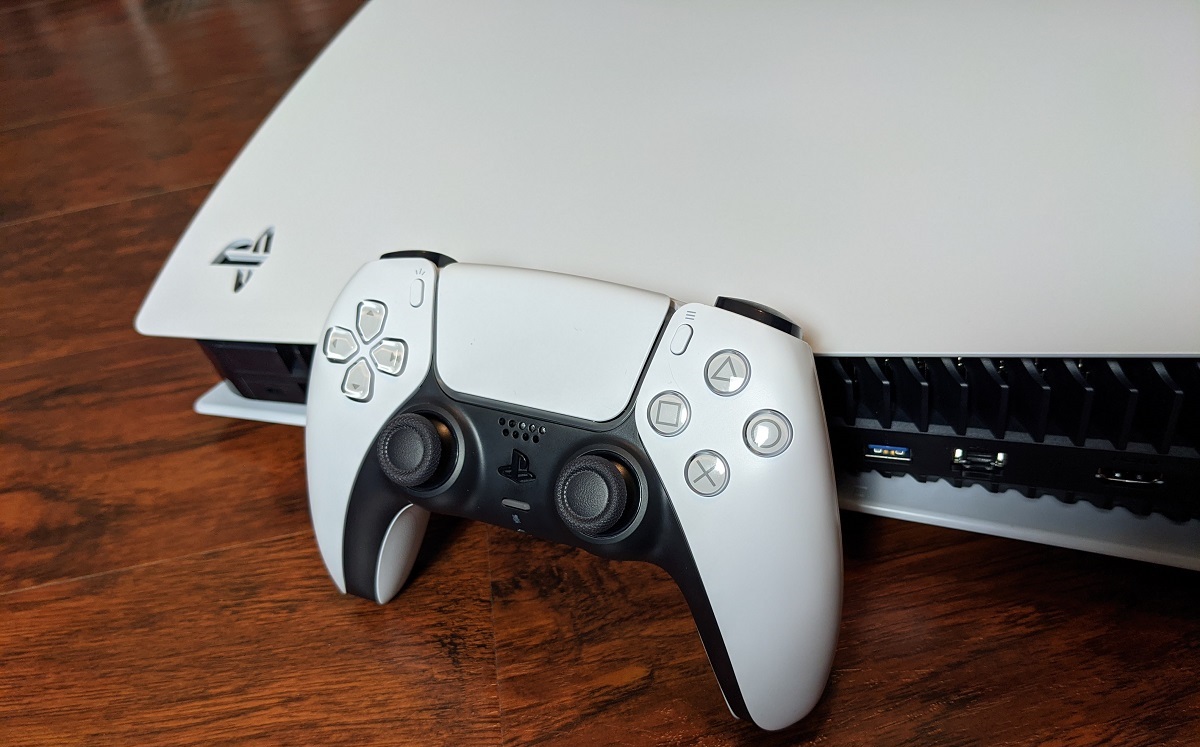Introduction
The PlayStation 4 (PS4) is a gaming console that has gained immense popularity among gamers worldwide. Alongside its impressive processing capabilities, the PS4 relies on a powerful Graphics Processing Unit (GPU) to deliver stunning graphics and immersive gaming experiences. The GPU plays a crucial role in rendering images, textures, and visual effects in real-time, providing vibrant and realistic visuals while maintaining smooth gameplay.
In this article, we will delve into the details of the GPU that powers the PS4 and explore its specifications, performance, and optimizations for gaming. Understanding the technology behind the GPU will not only enable us to appreciate the visual advancements in PS4 games but also shed light on how the console compares with its competitors.
The custom AMD GPU marks a significant collaboration between Sony and AMD to develop a chip specifically tailored for the PS4. This partnership aimed to design a GPU that could handle the increasingly demanding graphics requirements of modern gaming. By incorporating advanced features and optimizations, the result is an incredibly powerful GPU that enhances the overall gaming experience on the PS4.
Throughout this article, we will discuss the specifications of the PS4’s GPU, its performance and capabilities, as well as its optimizations for gaming. Additionally, we will compare the PS4’s GPU with those found in other gaming consoles to gain a broader perspective on its capabilities and strengths. So, without further ado, let’s dive into the world of the PS4’s GPU and see what makes it a gaming powerhouse.
Understanding the GPU in PS4
To fully comprehend the significance of the GPU in the PS4, it’s essential to have a basic understanding of how it functions. The GPU, or Graphics Processing Unit, is a specialized electronic circuit responsible for rendering and manipulating images, animations, and videos. In the context of a gaming console like the PS4, the GPU plays a crucial role in delivering high-quality visuals and ensuring smooth gameplay.
The GPU in the PS4 is a custom-made chip developed by AMD, specifically designed to meet the demanding requirements of modern gaming. It works in conjunction with the console’s Central Processing Unit (CPU) to optimize graphics performance and ensure seamless gameplay experiences. By offloading intensive graphics processing tasks from the CPU to the GPU, the PS4 can deliver stunning visuals without compromising overall system performance.
One of the key features of the PS4’s GPU is its ability to handle complex rendering techniques, such as shader programs and tessellation. Shaders enable dynamic effects like realistic lighting and shadows, while tessellation enhances the detail and smoothness of objects in the game world. The GPU’s parallel processing architecture allows for efficient execution of these rendering techniques, resulting in lifelike visuals and immersive gameplay.
Furthermore, the GPU in the PS4 boasts a significant amount of video memory known as VRAM. This dedicated memory ensures that the GPU has quick access to the textures, models, and other graphical assets required by the games. The ample VRAM capacity enables the GPU to load and process large amounts of data, resulting in seamless visuals that load quickly and without noticeable stuttering or frame drops.
In terms of connectivity, the PS4’s GPU supports various video output options, including HDMI and DisplayPort. This flexibility allows users to connect their consoles to a wide range of displays, from standard high-definition televisions to cutting-edge 4K monitors. The GPU can handle the respective resolutions and refresh rates supported by these display standards, ensuring that players can enjoy games in their preferred visual fidelity.
Overall, understanding the role and capabilities of the GPU in the PS4 is crucial for appreciating the console’s stunning graphics and immersive gaming experiences. With its custom-built design, parallel processing capabilities, ample VRAM, and versatile video output options, the GPU in the PS4 sets a new standard for visual fidelity in the gaming industry. In the next section, we will delve deeper into the specifications of the PS4’s GPU to gain a better understanding of its power and capabilities.
The Custom AMD GPU
The heart and soul of the PS4’s graphics processing lies within its custom AMD GPU. Developed through a partnership between Sony and AMD, this GPU was designed to meet the specific needs of the console and deliver exceptional gaming performance.
The custom AMD GPU in the PS4 is based on AMD’s Graphics Core Next (GCN) architecture, a powerful and energy-efficient design that allows for advanced rendering techniques and high-quality visuals. This architecture enables the GPU to handle complex calculations and data processing tasks efficiently, resulting in smooth and immersive gaming experiences.
To maximize the potential of the GCN architecture, the custom AMD GPU in the PS4 features 18 Compute Units (CUs), each containing 64 Stream Processors. This gives a total of 1152 Stream Processors, responsible for parallel processing and executing tasks simultaneously. The significant number of Stream Processors allows for quick and efficient rendering of complex scenes, textures, and graphical effects.
In addition to the high number of Stream Processors, the custom AMD GPU utilizes Unified Shader Architecture. This design enables the GPU to dynamically allocate processing power to geometry, vertex, and pixel shaders as needed, ensuring optimal performance for different gaming scenarios.
The custom AMD GPU also boasts impressive memory bandwidth thanks to its use of GDDR5 memory technology. With a memory interface of 256 bits and a bandwidth of 176 GB/s, the GPU can quickly access and manipulate game assets, leading to faster loading times and fluid gameplay.
To further enhance the graphical capabilities of the PS4, the custom AMD GPU supports advanced features such as hardware tessellation and compute shaders. Tessellation allows for the subdivision of polygons, resulting in smoother and more detailed objects, while compute shaders enable complex calculations and simulations, enhancing visual effects and physics simulations in games.
Overall, the custom AMD GPU in the PS4 is a marvel of technology and engineering. It combines the power of AMD’s architecture, parallel processing capabilities, and high memory bandwidth to deliver astonishing graphics and immersive gameplay experiences. Its custom design ensures that the GPU is optimized to work seamlessly with the rest of the console’s hardware, resulting in a gaming experience that pushes the boundaries of what’s possible. In the next section, we will explore the detailed specifications of the PS4’s GPU to gain a deeper technical understanding of its capabilities.
Specifications of the GPU
The GPU in the PS4 comes with impressive specifications that contribute to its outstanding performance and visual capabilities. Let’s take a closer look at the key specifications of the PS4’s GPU:
- Architecture: The GPU in the PS4 is based on AMD’s Graphics Core Next (GCN) architecture. This architecture provides a solid foundation for efficient parallel processing and advanced rendering techniques.
- Compute Units and Stream Processors: The PS4’s GPU contains 18 Compute Units (CUs), each housing 64 Stream Processors. This configuration gives a total of 1152 Stream Processors, allowing for quick and efficient rendering of game graphics.
- Shader Model: The PS4’s GPU supports Shader Model 5.0, which enables advanced shader programs and effects, resulting in dynamic lighting, realistic shadows, and lifelike visual details.
- Memory Bandwidth: The GPU utilizes GDDR5 memory technology with a 256-bit memory interface, providing a memory bandwidth of 176 GB/s. This high bandwidth allows for fast access to game assets, reducing loading times and ensuring smooth gameplay.
- Video Memory: The PS4’s GPU is equipped with 8GB of GDDR5 VRAM. This ample video memory ensures that the GPU has enough space to store and process textures, models, and graphical assets, resulting in stunning and detailed visuals.
- Output Resolution: The GPU supports various output resolutions, including 1080p and 4K, depending on the capabilities of the connected display. This flexibility allows players to enjoy games in their preferred visual fidelity.
- Connectivity: The GPU offers multiple video output options, including HDMI and DisplayPort. This versatility enables users to connect their PS4 consoles to a wide range of displays, from standard HDTVs to high-resolution monitors.
These specifications, combined with the custom design and optimization of the GPU, make the PS4 a formidable gaming console capable of delivering stunning visuals and immersive gameplay experiences. The computing power, memory bandwidth, and output resolutions of the GPU work in harmony to provide players with a high-quality gaming experience that pushes the boundaries of graphical fidelity and realism.
Now that we have explored the specifications of the GPU, let’s move on to the next section, where we will dive into the performance and capabilities of the PS4’s GPU, and how it contributes to the overall gaming experience.
Performance and Capabilities
The GPU in the PS4 delivers exceptional performance and boasts impressive capabilities that contribute to the console’s reputation as a gaming powerhouse. Let’s explore the key aspects of the GPU’s performance and capabilities:
- Graphics Rendering: The GPU’s high number of Stream Processors and advanced architecture allows for efficient graphics rendering. This results in stunning visual effects, realistic lighting, and detailed textures, creating immersive gaming environments.
- Frame Rate Stability: The PS4’s GPU is designed to maintain a stable frame rate during gameplay. With powerful processing capabilities, the GPU can handle complex scenes and maintain a smooth and consistent frame rate, enhancing the overall gaming experience.
- Resolution and Detail: The GPU supports various output resolutions, including 1080p and even 4K in some cases. This enables players to enjoy games with high levels of detail and visual clarity, showcasing the capabilities of the GPU and delivering a truly immersive experience.
- Visual Effects and Shaders: The GPU’s support for advanced shader programs allows for the implementation of dynamic lighting, realistic shadows, and other visual effects. This adds depth and realism to games, enhancing the overall visual experience and immersing players in the virtual world.
- VR and 3D Support: The GPU’s power and performance make it well-suited for virtual reality (VR) and 3D gaming. With its ability to render high-quality visuals and maintain smooth frame rates, the PS4 offers an enriched VR and 3D gaming experience.
- Multi-Tasking Capabilities: The PS4’s GPU is not limited to gaming performance alone. It also contributes to the console’s ability to run multiple applications simultaneously. The powerful GPU ensures smooth multitasking, allowing users to seamlessly switch between games, media streaming, and other applications.
- System Optimization: The custom design of the GPU allows it to work efficiently in tandem with the PS4’s CPU and other hardware components. This optimization ensures that the GPU’s performance is maximized, resulting in smooth gameplay and efficient resource utilization.
The combination of these performance and capabilities results in a gaming experience that is visually stunning, seamless, and immersive. The GPU’s power and efficiency enable the PS4 to handle graphically demanding games with ease, providing players with an unparalleled level of detail and realism.
In the next section, we will explore how the PS4’s GPU is optimized specifically for gaming, including features and technologies that enhance gameplay and further elevate the gaming experience.
Optimizations for Gaming
The GPU in the PS4 is not just a raw processing powerhouse, but also features various optimizations that are specifically tailored for gaming. These optimizations work in harmony with the console’s hardware and software to deliver an exceptional gaming experience. Let’s explore some of the key optimizations for gaming on the PS4:
- Console Architecture: The PS4’s GPU is custom-designed to work seamlessly with the console’s CPU, memory, and other components. This optimized architecture ensures efficient communication and resource sharing, resulting in improved overall system performance for gaming.
- Asynchronous Compute: The PS4’s GPU supports asynchronous compute, a feature that allows for parallel processing of multiple tasks simultaneously. This optimization helps in improving GPU utilization and enhancing gaming performance, as the GPU can efficiently handle different types of calculations and graphic rendering simultaneously.
- Low-Level APIs: The PS4’s GPU benefits from the use of low-level APIs (Application Programming Interfaces) like DirectX 12 and Vulkan. These APIs provide more direct access to the GPU’s capabilities, enabling developers to extract better performance from the GPU and optimize graphics rendering for their games.
- Dynamic Resolution Scaling: The GPU in the PS4 features dynamic resolution scaling, a technique that adjusts the output resolution based on the complexity of the scene. This optimization allows games to maintain a consistent frame rate by automatically scaling the resolution up or down as required, ensuring smooth gameplay even during graphically intensive moments.
- Anti-aliasing Techniques: The PS4’s GPU utilizes various anti-aliasing techniques to reduce jagged edges and improve overall image quality. Techniques like multisample anti-aliasing (MSAA) and post-process anti-aliasing (FXAA, SMAA) enhance the visual fidelity of games by smoothing out lines and edges, resulting in a cleaner and more realistic appearance.
- Texture Streaming: With the abundant video memory and high memory bandwidth, the PS4’s GPU can efficiently stream textures during gameplay. This optimization ensures that game assets are loaded smoothly and quickly, reducing texture pop-in and allowing for seamless exploration of game worlds.
- Optimized Developer Tools: Sony provides developers with a suite of tools and resources to optimize graphics performance on the PS4. These tools, such as the PlayStation Development Kit (PDK), allow developers to fine-tune their games to leverage the full potential of the GPU, resulting in visually stunning and responsive gameplay.
These optimizations collectively contribute to a gaming experience on the PS4 that is visually impressive, smooth, and responsive. The customized architecture, asynchronous compute, low-level APIs, dynamic resolution scaling, anti-aliasing techniques, texture streaming, and optimized developer tools all work together to ensure that games on the PS4 harness the full power of the GPU for an unparalleled gaming experience.
In the next section, we will compare the GPU in the PS4 with those found in other gaming consoles to understand its position in the market and its impact on gaming performance.
Comparisons with Other Consoles
When evaluating the GPU in the PS4, it’s essential to compare it with the GPUs found in other gaming consoles to gain a broader perspective on its capabilities and performance. While each console has its own unique features and strengths, let’s explore how the PS4’s GPU compares with those of its competitors.
One of the main competitors of the PS4 is the Xbox One, which features a GPU developed by AMD. The GPU in the Xbox One has similar specifications to the PS4’s GPU, including an AMD GCN architecture, a comparable number of Stream Processors, and GDDR5 memory. However, there are some differences in clock speeds and memory bandwidth that can impact performance. Generally, the PS4 has been praised for delivering slightly better graphical fidelity and performance compared to the Xbox One.
Moving into the current generation of consoles, the PS4 Pro and Xbox One X stand out as enhanced versions of their predecessors. The GPU in the PS4 Pro, known as the Polaris GPU, offers improvements in clock speeds and raw performance compared to the original PS4. This enables the PS4 Pro to deliver higher resolutions and improved graphics in games that are specifically optimized for the console.
On the other hand, the Xbox One X boasts a more powerful GPU, known as the Scorpio Engine. The Scorpio Engine features more Compute Units, resulting in higher overall processing power compared to the GPU in the PS4 Pro. This allows the Xbox One X to offer native 4K resolution in many games and enhanced visual effects.
When comparing the PS4’s GPU with those found in gaming PCs, it’s important to note that PCs offer more flexibility in terms of hardware configurations. High-end gaming PCs often feature GPUs that surpass the capabilities of the PS4’s GPU, providing even better graphics, higher resolutions, and faster frame rates. However, it’s worth mentioning that the console hardware is optimized specifically for gaming, and developers can utilize the full potential of the console’s GPU to deliver impressive visuals and performance.
In summary, the GPU in the PS4 is a powerful and capable graphics processor that competes favorably with other consoles in the market. While the Xbox One and Xbox One X offer strong competition, the PS4 has been lauded for its graphical fidelity and overall gaming performance. However, it’s important to consider that gaming on a high-end PC can offer even greater graphical capabilities. Nonetheless, the GPU in the PS4 remains a significant factor in its success and popularity among gamers.
In the final section of this article, we will summarize the key points discussed and reiterate the significance of the GPU in the PS4 in delivering superior gaming experiences.
Conclusion
The GPU in the PlayStation 4 (PS4) is a crucial component that powers the immersive and visually stunning gaming experiences the console is known for. Developed in collaboration with AMD, the custom-built GPU brings advanced graphics capabilities and optimizations specifically tailored for gaming.
Understanding the GPU in the PS4 gives us insight into its specifications, performance, and optimizations. With an architecture based on AMD’s Graphics Core Next (GCN), the PS4’s GPU features a high number of Compute Units and Stream Processors, allowing for efficient and parallel processing. The GPU’s memory bandwidth and video memory capacity ensure quick access to game assets, resulting in seamless and detailed visuals.
The PS4’s GPU delivers exceptional performance and capabilities. It excels in rendering graphics, maintaining stable frame rates, and supporting a range of resolutions and visual effects. Optimizations such as asynchronous compute, low-level APIs, and dynamic resolution scaling contribute to smooth and responsive gameplay. The GPU also benefits from anti-aliasing techniques, texture streaming, and optimized developer tools, enhancing the overall gaming experience.
Comparisons with other consoles highlight the PS4’s strengths, as it consistently delivers impressive graphical fidelity and performance. While gaming PCs offer greater flexibility and power, the console’s hardware optimization ensures a seamless gaming experience that takes full advantage of the GPU’s capabilities.
In conclusion, the GPU in the PS4 is a cornerstone of its success, elevating gaming visuals to new heights and offering immersive experiences to players. The custom AMD GPU, with its advanced architecture, optimizations, and impressive specifications, ensures that the PS4 remains at the forefront of console gaming. So, whether you’re exploring vibrant game worlds, engaging in intense battles, or experiencing virtual reality, the GPU in the PS4 delivers on its promise of exceptional performance and breathtaking visuals.







